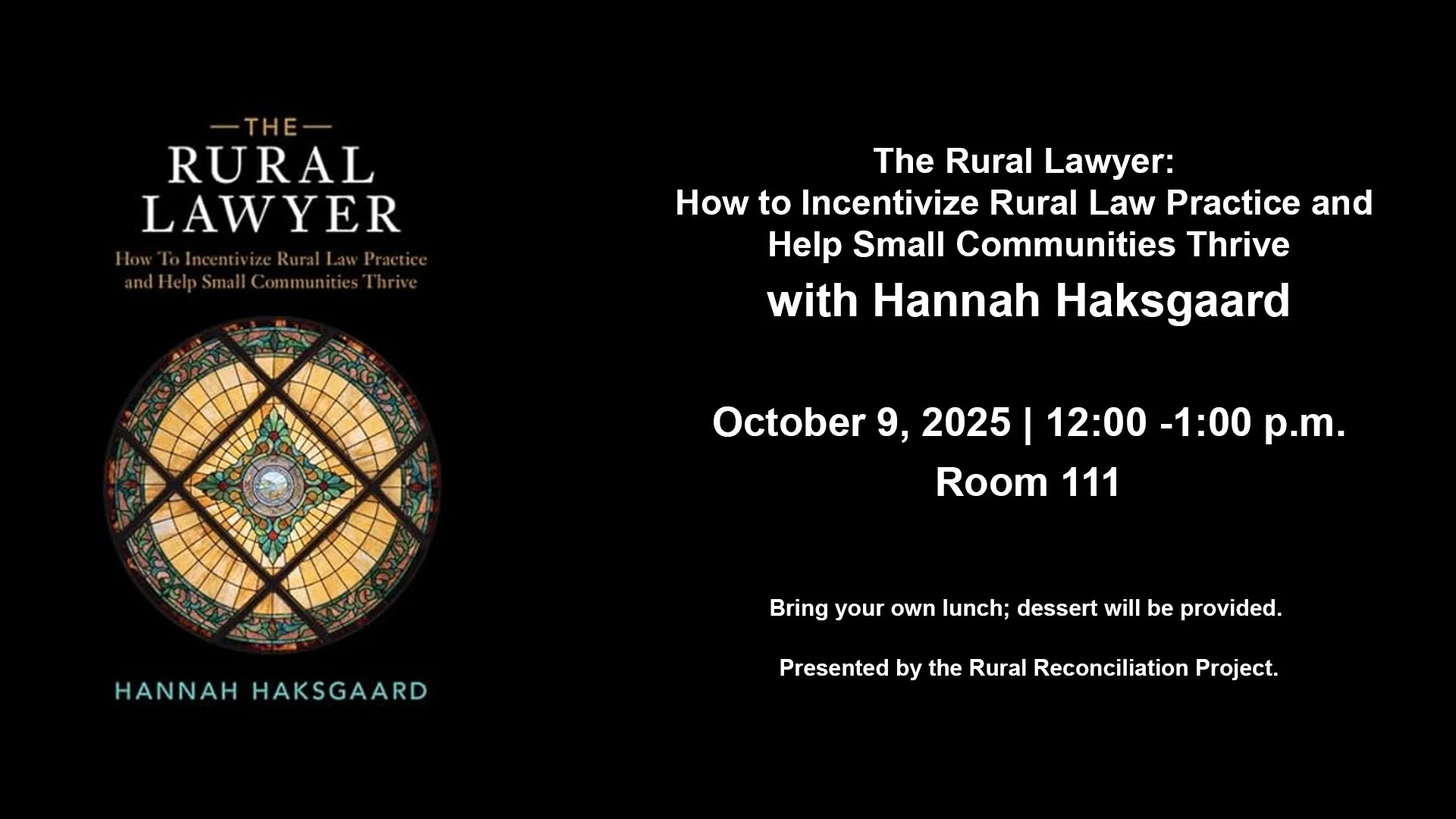Event Summary: The Rural Lawyer with Professor Hannah Haksgaard
Event Summary by Katelyn Rich
The Rural Reconciliation Project hosted Professor Hannah Haksgaard of the University of South Dakota Knudson School of Law to discuss her new book on rural attorneys in South Dakota.
The Rural Lawyer: How to Incentivize Rural Law Practice and Help Small Communities Thrive is the culmination of a series of interviews Professor Haksgaard conducted with South Dakota’s Rural Attorney Recruitment Program participants.
These interviews highlight the experiences of participating attorneys, reveal the program’s impact, and deepen understandings about what practice in rural communities looks like. Professor Haksgaard set out to explore the efficacy of the South Dakota recruitment program model and the motivations of attorneys pursuing rural practice. Her talk dispels myths about rural law practice and highlights the integration of rural lawyers into their communities. She concluded her presentation with suggestions and a call to action for law schools and state bar associations to continue to implement programs, including ones similar to the South Dakota model, to tackle the rural attorney shortage.
Event Recording
Discussion Highlights
Professor Haksgaard began with a discussion of the rural attorney shortage and a survey of legislative responses. These include programs such as South Dakota’s Rural Attorney Recruitment Program, which provides direct stipends to lawyers who participate in the program and commit to working in rural communities in South Dakota. This program, framed as an economic development initiative, encourages shared investment among the state, South Dakota’s bar association, and the local communities to attract new attorneys.
At the ten-year anniversary of the program’s launch, Professor Haksgaard engaged in a comprehensive review of its participants to document their experiences as well as the efficacy of the program. She highlighted the seventy-five percent retention rate for those who entered the program, including two participants who had no prior connection to South Dakota. Through a detailed breakdown, Professor Haksgaard also identified the greater likelihood of success for solo practitioners and those participants who entered an established practice over participants who attempted to open satellite offices for law firms stationed in larger communities.
In-person interviews revealed a common theme among participants: a sense of deep involvement in their communities as go-to problem solvers. A vast majority of participants reported feeling connected to their community and that their legal work made a difference in the lives of residents. Community support for the incoming attorneys took different forms, including donations to help with office rent and other startup costs. These interviews confirmed for Professor Haksgaard that the program is achieving its goals and is providing an overall benefit to communities in relation to the amount of investment required by the stipend incentive model.
Professor Haksgaard offered several other potential program options implemented in other states including feeder programs, student loan forgiveness, incubator programs, and succession planning assistance. She also emphasized the importance of communicating that, with appropriate financial and mentorship support, rural practice can be a successful and rewarding career path. Professor Haksgaard concluded by recommending that other states consider a similar model to South Dakota’s Rural Attorney Recruitment Program.
In-Person Presentation at the University of Nebraska College of Law

